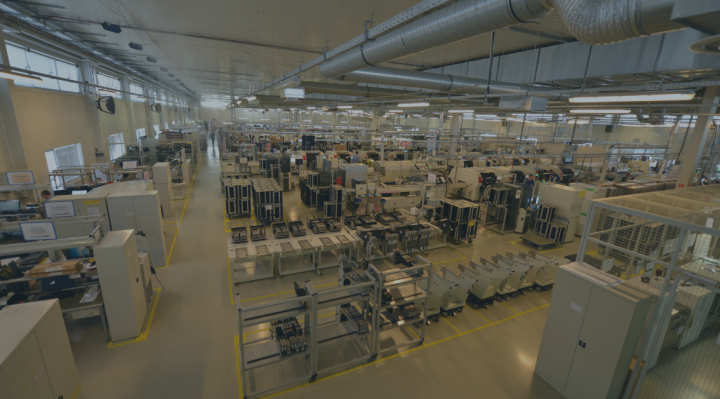Is Poland a strong choice for defence electronics manufacturing in 2026?
Defence programs need steady production, short routes, and trusted partners. Firms in defence, aerospace, and dual-use fields look for locations inside Europe with clear rules, trained workers, and strong supply chains. Poland offers these conditions. The country raises defence spending, builds new industrial capacity, and draws global primes. These factors create wide room for EMS partners with high skill and strong discipline.
Geopolitical Drivers and Poland’s Defence Focus
The security shift after 2022 pushed every NATO member toward higher spending. In 2014, only three members reached the two percent benchmark. In 2025, all thirty-two are expected to reach it or pass it. This marks a full reset of defence planning.
Poland leads this shift with a projected 4.7 percent of GDP for defence in 2025. This level signals long commitment. It supports long programs, stable orders, and a steady flow of work for suppliers. The country uses a two-part financing model. One part flows from yearly budgets. Another part flows from a separate fund backed by state support. This gives long programs room to move forward without gaps in funding. It also reduces risk for firms that support these programs.
Large parts of this spending go to electronics-heavy systems. Radar, ISR units, radios, secure networks, guided weapons, and advanced vehicles all rely on high-reliability electronics. This pushes the demand for EMS partners with strict process control, deep inspection skills, and the ability to support long-life platforms.
Shift to Near Production
This spike in defence spending fits a wider trend inside Europe. Many firms reduce exposure to long routes and distant suppliers. The disruptions of recent years exposed weak points in long chains. Firms now look at risk, delivery time, and legal stability. Poland and the wider CEE region gained from this. They offer competitive labor rates, strong engineering talent, and a stable EU and NATO setting.
Poland sits close to Western Europe. Road links reach major hubs fast. This shortens lead times for production builds, NPI runs, and qualification batches., Engineering teams work with fewer delays. Travel remains simple. Face-to-face work stays possible even at short notice.
Global firms see value in this. The semiconductor plant near Wrocław with a 4.6 billion euro budget signals trust in Poland’s long-term industrial path. The state has stated that half of modernization spending should support domestic firms. This leads global primes such as Lockheed Martin and L3Harris to expand local operations. This lifts demand for EMS partners with high skill and stable capacity.
Foreign primes often seek local teaming partners. These teams need PCB assembly, testing, coating, potting, integration, and logistics support. Polish EMS companies with strong capability gain direct access to this stream of work.
Electronics Demand in Modern Warfare
Recent conflict underlined the scale of electronics in defence. Unmanned systems, ISR units, satellite links, sensor fusion, and electronic warfare tools dominate many missions. These systems rely on dense PCBs, mixed-signal modules, RF assemblies, power units, and rugged connectors.
ICEYE from Finland operates a large SAR satellite group. These satellites provide high-resolution images in day, night, and clouded conditions. APS from Poland produces counter-drone systems built on in-house radar designs. These two examples show the level of engineering work now present in the region.
L3Harris selected Katowice for EO and IR system production for Europe. These systems support surveillance, targeting, and situational awareness. Their choice signals strong trust in Poland’s talent and production standards. These examples demonstrate rising demand for EMS partners with strict standards, deep inspection capability, and a strong digital backbone.
Core Requirements for Defence EMS Partners
Defence electronics need discipline across every stage of production. Firms in this sector expect Class 3 work under IPC-A-610 rules. These rules set tight limits for solder fill, placement, and joint quality. A reliable EMS partner uses Class 3 as normal practice.
Strong EMS partners run a MES platform for full traceability. MES links every component, every operator, and every process step to a timestamp. This helps prevent counterfeit risks. It supports audits. It supports failure review. It helps your team confirm build history with no gaps.
Inspection and testing protect against defects:
- 3D SPI checks solder paste height and volume before placement.
- 3D AOI checks solder joints and component height.
- 3D X-ray checks BGA joints and reveals voids or head-in-pillow defects.
- ICT checks electrical performance on each net and confirms correct assembly.
Functional testing builds on these steps. Strong EMS partners build fixtures, load software, and run checks under well-defined conditions.
Defence systems face shock, heat, cold, moisture, and chemicals. Conformal coating adds a thin protective layer. Potting protects assemblies against strong shock and vibration. Both require trained teams and steady control. Some defence programs need temperature cycling, humidity checks, and vibration tests. EMS partners with environmental chambers shorten test loops and reveal weak points early.
Quality, Compliance, and Dual-Use Rules
A strong QMS forms the base of defence work. ISO 9001 covers core process control. AS9100 adds extra rules linked to risk, configuration control, and counterfeit risks. ISO 13485 shows similar discipline and is strong proof of process maturity.
Defence programs also fall under EU dual-use rules. These rules sit under Regulation 2021/821. They control exports of items with both military and civilian uses. A partner with an in-house compliance team supports filings, export checks, and customs steps. This reduces delays and supports global shipments to NATO members and trusted partners.
EMS partners with strong logistics teams add value here. They prepare export codes, track shipments, and manage documents for sensitive items. This keeps supply lines stable across long programs.
Outlook for Defence Electronics in Poland
Poland’s defence sector grows at a fast pace. Spending increases. Prime contractors expand local teams. Local firms gain skill in sensors, unmanned systems, and radar. This pushes demand for EMS partners with high skill, stable processes, and strong discipline.
Your organisation gains access to short transport routes, trained labor, deep engineering talent, and clear EU rules. You gain a partner able to support Class 3 builds, high-end inspection, coating, potting, traceability, and long-term service work.
Poland offers a stable base for defence electronics. Rising budgets, strong talent, and clear alignment with NATO interests create a long runway for growth. This makes the country a strong choice for firms building defence electronics inside Europe and seeking long cooperation with EMS partners that value precision, discipline, and reliability.






